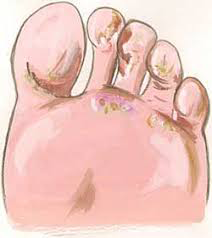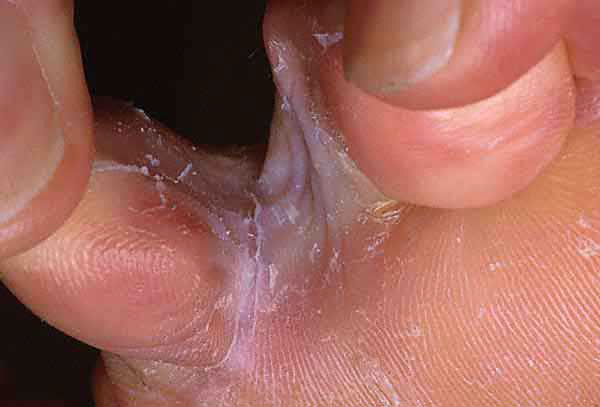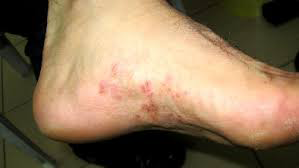Connect With Us
Athletes Foot
What is Athlete's Foot?
 Athlete's foot is a skin condition caused by a fungus. The fungus most commonly attacks the feet because shoes create a warm, dark, and humid environment which encourages fungus growth. The most common place of the foot for Athlete’s Foot is in between the toes. Other conditions, such as sweaty feet, allergic reactions, eczema, and psoriasis, may mimic the appearance of Athlete’s Foot.
Athlete's foot is a skin condition caused by a fungus. The fungus most commonly attacks the feet because shoes create a warm, dark, and humid environment which encourages fungus growth. The most common place of the foot for Athlete’s Foot is in between the toes. Other conditions, such as sweaty feet, allergic reactions, eczema, and psoriasis, may mimic the appearance of Athlete’s Foot.
What Causes Athlete’s Foot?
The fungus that causes Nail Fungus and Athlete’s Foot loves a warm, dark, moist environment. The warmth and dampness of areas around swimming pools, showers, and locker rooms are also breeding grounds for fungi. Because the infection was common among athletes who used these facilities frequently, the term "Athlete's Foot" was coined. But you don’t have to be an Athlete to get Athlete’s Foot!
What are the Signs and Symptoms of Athlete’s Foot?
- Dry, flaky skin
- Itching and burning, which may increase as the infection spreads
- Scaling, cracks or deep lines in the skin
- Inflammation or redness
- Blistering. When blisters break, small raw areas of tissue are exposed, which can be very painful.
Athlete's foot may spread to the soles of the feet and to the toenails. It can be spread to other parts of the body, (typically the groin and underarms). The organisms causing Athlete's Foot may persist for long periods.


Diagnosis and Treatment of Athlete’s Foot
If you have any of the above signs and symptoms, contact a foot and ankle specialist; they will determine if a fungus is the cause of the problem. If it is, a specific treatment plan, including the prescription of antifungal medication, applied topically or taken by mouth, will usually be suggested.
How can Athlete’s Foot be Prevented?
It is not easy to prevent athlete's foot because it is usually contracted in dressing rooms, showers, and swimming pool locker rooms where bare feet come in contact with the fungus. However, you can prevent infection by practicing good foot hygiene:
- Washfeet daily with soap and water; dry carefully, especially between the toes!
- Avoid walking barefoot; always use shower shoes or flip flops in public showers or at home if someone you share a shower with has a fungus
- Reduce perspiration by using talcum powder or anti-fungal powders in your shoes
- Wear light and airy shoes
- Change shoes regularly to decrease moisture. Try not to wear the same shoes every day.
- Wear socks that keep your feet dry, and change them frequently if you perspire heavily. Cotton or moisture-wicking socks are the best.

Again, if you think you may have Athlete’s Foot, contact one of the Foot and Ankle Specialists at Academy Foot and Ankle Specialists to confirm your diagnosis and develop a treatment plan for you.
